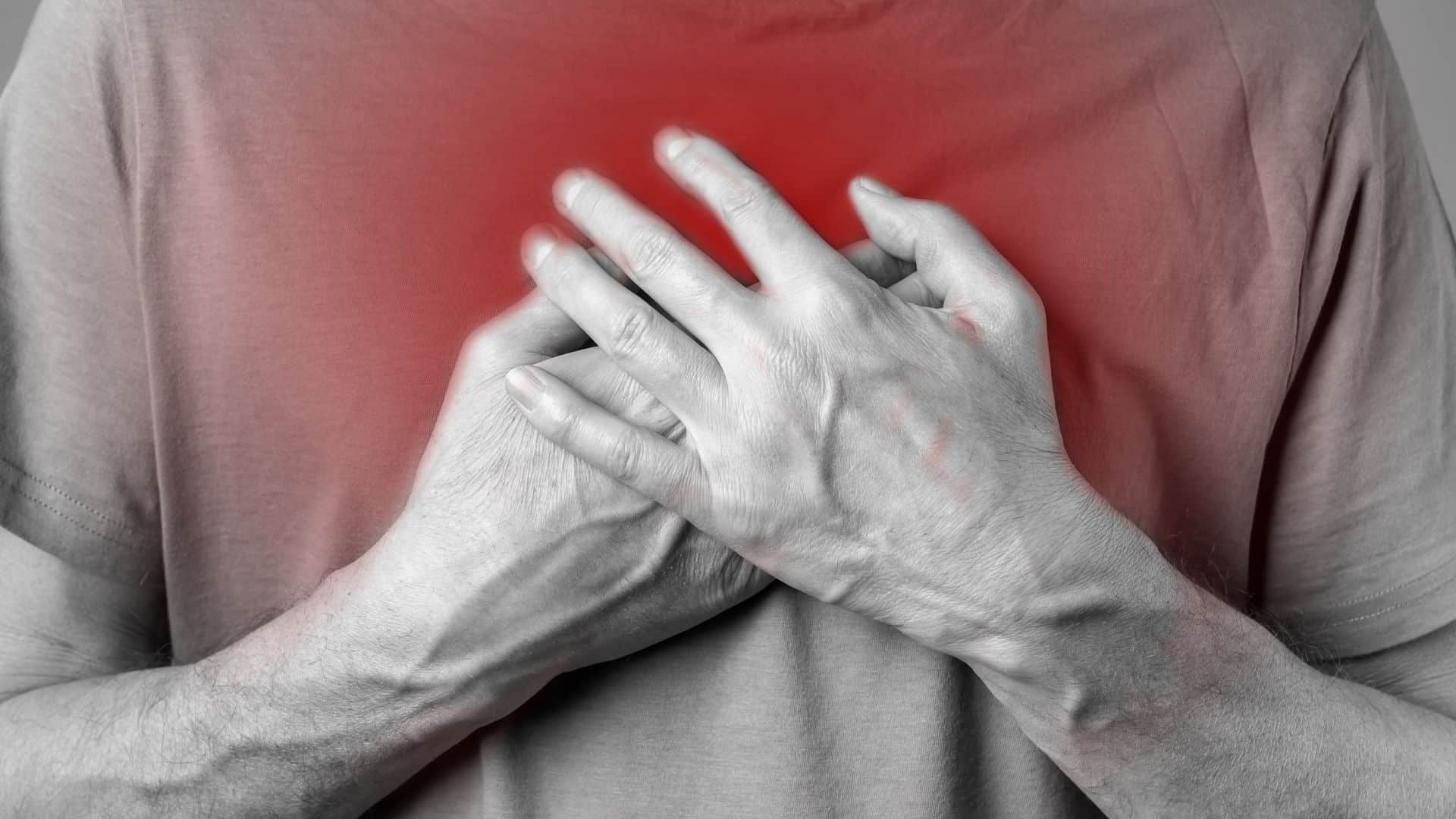
Angina, or Angina Pectoris, is chest pain or discomfort that recurs.
Angina can be a symptom of coronary artery disease (CAD). This occurs when arteries that carry blood to your heart become narrowed and blocked because of atherosclerosis or a blood clot. It can also happen because of unstable plaques, poor blood flow through a narrowed heart valve, and a decreased pumping function of the heart muscle, as well as a coronary artery spasm. (Hopkins Medicine)
Angina usually occurs during physical activity or emotional stress and is generally relieved by rest. It can range from mild discomfort to severely disabling pain. Angina should not be ignored as it may indicate a heart attack. (Mayo Clinic)
Angina Symptoms and Causes
Angina symptoms include chest pain and discomfort. The chest pain or discomfort may feel like:
- Burning
- Fullness
- Pressure
- Squeezing
Pain may also be felt in the arms, neck, jaw, shoulder or back.
Other symptoms of angina include:
- Dizziness
- Fatigue
- Nausea
- Shortness of breath
- Sweating
The severity, duration, and type of angina can vary. New or different symptoms may signal a more dangerous form of angina (unstable angina) or a heart attack.
Any new or worsening angina symptoms need to be evaluated immediately by a healthcare provider who can determine whether you have stable or unstable angina. (Mayo Clinic)
Causes of Angina
The most common cause of angina is blockages in the arteries of your heart (coronary artery disease) due to plaque buildup. This narrowing of the coronary arteries restricts blood flow and oxygen supply to the heart muscle, resulting in chest pain or discomfort.
Other causes include:
- Anemia
- High Blood Pressure
Angina Diagnosis and Treatment
Nitrates cause the coronary arteries to widen, increasing blood flow through the coronary arteries. They come in several forms. One kind (nitroglycerin) is a pill you place under your tongue when you first feel pain or discomfort. It should relieve angina within 5 minutes. Long-acting nitrates, taken daily by pill or patch, help prevent angina attacks.
Beta-blockers slow the heart rate, so the heart doesn’t have to work so hard. They reduce the risk of abnormal heart rhythms and lower blood pressure.
Calcium channel blockers lower blood pressure and widen coronary arteries. They are an alternative to beta blockers for people with asthma or chronic obstructive lung disease, heart block and related conduction system abnormalities, or peripheral artery disease. Ranolazine is another drug that can improve blood flow to the heart. It can be combined with other drugs to relieve chest pain and increase exercise tolerance in people who don’t respond to other medications. (Up to Date)
Other treatments include angioplasty, coronary artery bypass surgery, and implantable cardioverter-defibrillators (ICDs). Angioplasty is a minimally invasive procedure that uses a catheter to widen narrowed or blocked coronary arteries. Coronary artery bypass surgery is more invasive and involves grafting new arteries around the blockage.
ICDs are used in patients at risk of sudden cardiac death, such as those with advanced heart failure or ventricular arrhythmias. They are implanted under the skin of the chest and function as an artificial pacemaker to help regulate abnormal heart rhythms.
Statins are a family of drugs used to lower cholesterol. In addition to helping your body pull cholesterol out of artery-clogging plaque, they may also reduce inflammation in blood vessels and prevent plaque from breaking open and causing a heart attack.
ACE inhibitors help relax blood vessels throughout the body. This can ease the heart’s workload.
Ranolazine reduces the amount of oxygen the heart needs to do its work.
(Harvard Health)
Lifestyle changes such as healthy eating, regular physical activity, and quitting smoking can help reduce risk factors for coronary artery disease and improve the overall quality of life, impacting angina symptoms. A plan for long-term success incorporating lifestyle changes is something you and your doctor will develop according to your personal health needs.
Head to the Emergency Room
Because angina can mimic the symptoms of a heart attack, emergency medical care is vitally important to minimize complications. An electrocardiogram and chest X-ray will help determine the cause of your symptoms. Blood tests may also be ordered. A cardiologist or ER doctor can quickly diagnose angina and treat you.
Our Board-Certified Emergency Physicians are standing by to provide life-saving medical care for angina sufferers. Whether you have angina or are experiencing a heart attack – we are qualified to diagnose and treat angina and heart attack.
Welcome to a higher level of care.
Works Cited
“Angina Pectoris.” Angina Pectoris | Johns Hopkins Medicine, 2 July 2020, https://www.hopkinsmedicine.org/health/conditions-and-diseases/angina-pectoris.
“Angina.” Mayo Clinic, Mayo Foundation for Medical Education and Research, 30 Mar. 2022, https://www.mayoclinic.org/diseases-conditions/angina/symptoms-causes/syc-20369373.
“Angina: Symptoms, Diagnosis and Treatments.” Harvard Health, https://www.health.harvard.edu/heart-health/angina-symptoms-diagnosis-and-treatments.
“Medications for Angina.” UpToDate, https://www.uptodate.com/contents/medications-for-angina-beyond-the-basics#!
